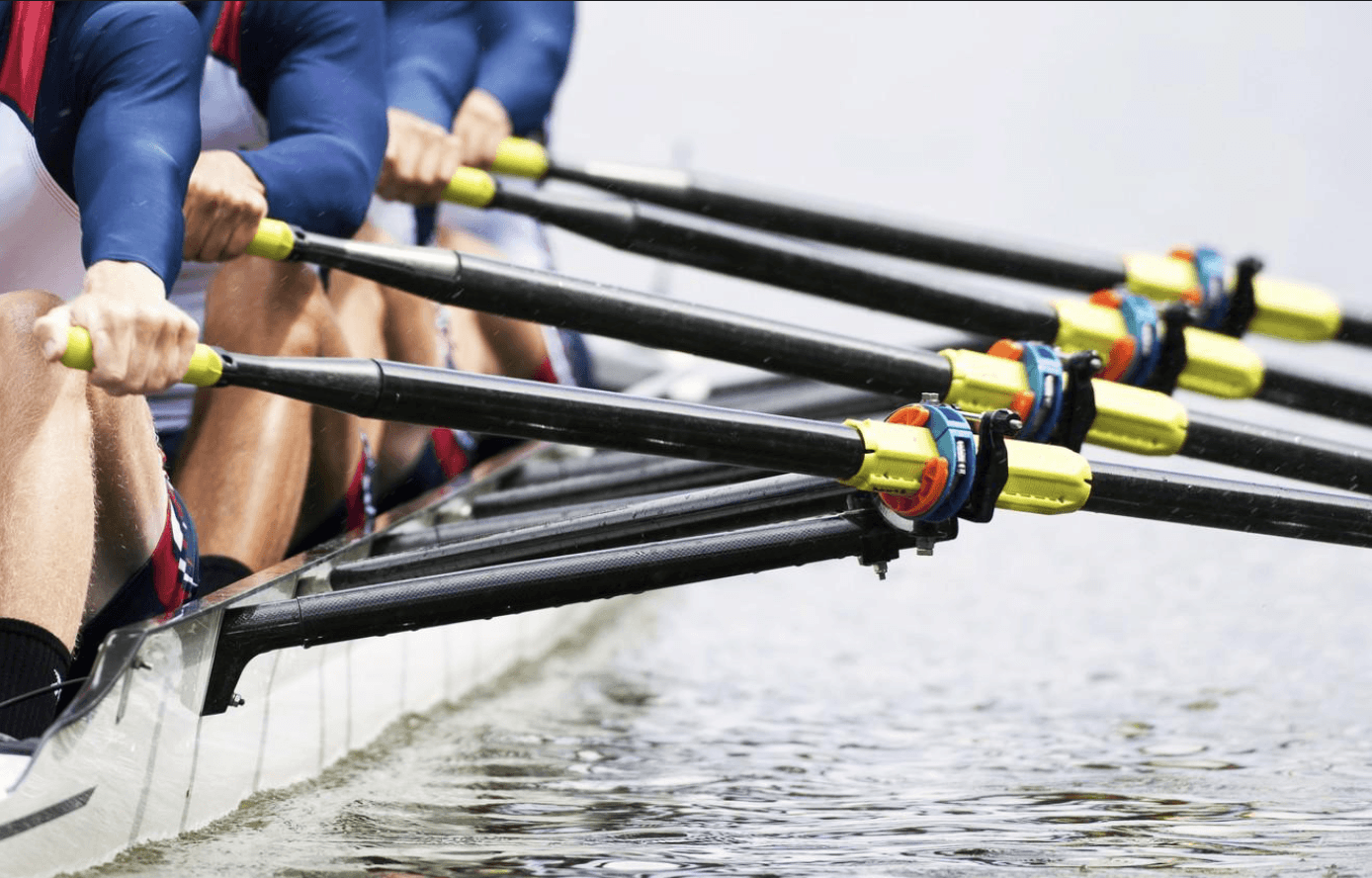
Aug 4, 2024
The History of Rowing: From Ancient Origins to Modern Sport
The History of Rowing: From Ancient Origins to Modern Sport
The History of Rowing: From Ancient Origins to Modern Sport
Rowing, one of the oldest sports in the world, traces its origins back thousands of years. It has evolved from a means of transportation and warfare to a competitive sport celebrated globally. The journey of rowing reflects human ingenuity, resilience, and the pursuit of mastery over water. Let's dive into the fascinating history of rowing and how it became the sport we know today.
Ancient Beginnings: Rowing as Survival and Warfare
The earliest evidence of rowing can be traced back to ancient Egypt, where hieroglyphics from as far back as 3000 BCE depict boats being rowed on the Nile River. In these early civilizations, rowing was a means of transportation, trade, and even exploration. The Greeks and Romans also used rowing as part of their naval forces, particularly during warfare. Triremes, the iconic warships of ancient Greece, were powered by skilled rowers who maneuvered the ships in battle.
Rowing as a coordinated effort required teamwork, discipline, and strength—traits that made it a critical skill in ancient naval fleets. The Romans, in particular, developed large galley ships, where slaves and prisoners were often forced to row in grueling conditions for hours on end, making rowing synonymous with both military power and endurance.
The Birth of Competitive Rowing in England
Although rowing had been practiced for centuries, the sport as we know it today began to take shape in England during the 17th century. The first recorded competitive race dates back to 1715 when Thomas Doggett, an Irish comedian and avid rowing enthusiast, sponsored a race on the River Thames. This event, known as the Doggett's Coat and Badge Race, still exists today and is one of the oldest continuously held sporting events.
By the 18th century, rowing clubs began to emerge, particularly along the River Thames. These clubs were often exclusive and connected to prestigious schools such as Eton and Westminster. Rowing also became popular at universities, with Oxford and Cambridge establishing their famous Boat Race in 1829, a tradition that continues to this day.
Rowing Spreads Globally
As the British Empire expanded, so too did the sport of rowing. It spread to countries like the United States, Australia, and Canada, where it quickly gained popularity. In 1852, the first American intercollegiate rowing race was held between Harvard and Yale, marking the beginning of what would become one of the most famous rivalries in rowing history.
The introduction of rowing to the modern Olympic Games in 1896 solidified its status as an international sport. Though rowing was scheduled to debut at the first modern Olympics in Athens, adverse weather conditions postponed its inclusion until the 1900 Paris Games. Since then, it has been a regular feature of the Olympic program, with both men’s and women’s events growing in number.
The Modern Era: Technology and Inclusion
Throughout the 20th century, rowing continued to evolve with advances in boat technology and training methods. Shells (boats) became lighter, more streamlined, and constructed from modern materials like carbon fiber. The introduction of sliding seats in the late 1800s allowed rowers to use their legs more effectively, leading to faster races and more efficient strokes.
The sport also became more inclusive, with women’s rowing being introduced to the Olympics in 1976. Over the decades, rowing has expanded to include a variety of disciplines, including sculling (where rowers use two oars) and sweep rowing (where each rower uses one oar). Coastal rowing and indoor rowing (ergometer competitions) have also grown in popularity, offering more ways to participate.
Rowing Today: A Global Sport
Today, rowing is a globally recognized sport, enjoyed by professionals and amateurs alike. The World Rowing Federation (FISA), founded in 1892, governs the sport internationally, ensuring that rowing maintains its competitive spirit and traditions while embracing innovation.
Rowing is celebrated for its combination of strength, endurance, technique, and teamwork. Whether it’s at the elite level of the Olympics or a local regatta, the sport embodies the spirit of perseverance, discipline, and unity.
Conclusion: The Legacy of Rowing
From its ancient origins as a necessity for survival and warfare to its development as a modern competitive sport, rowing has a rich and storied history. It has transcended time and geography to become a symbol of human effort and collaboration on the water. Today’s rowers continue to build on that legacy, pushing the limits of speed, technique, and teamwork, ensuring that rowing will remain a cherished sport for generations to come.
Rowing, one of the oldest sports in the world, traces its origins back thousands of years. It has evolved from a means of transportation and warfare to a competitive sport celebrated globally. The journey of rowing reflects human ingenuity, resilience, and the pursuit of mastery over water. Let's dive into the fascinating history of rowing and how it became the sport we know today.
Ancient Beginnings: Rowing as Survival and Warfare
The earliest evidence of rowing can be traced back to ancient Egypt, where hieroglyphics from as far back as 3000 BCE depict boats being rowed on the Nile River. In these early civilizations, rowing was a means of transportation, trade, and even exploration. The Greeks and Romans also used rowing as part of their naval forces, particularly during warfare. Triremes, the iconic warships of ancient Greece, were powered by skilled rowers who maneuvered the ships in battle.
Rowing as a coordinated effort required teamwork, discipline, and strength—traits that made it a critical skill in ancient naval fleets. The Romans, in particular, developed large galley ships, where slaves and prisoners were often forced to row in grueling conditions for hours on end, making rowing synonymous with both military power and endurance.
The Birth of Competitive Rowing in England
Although rowing had been practiced for centuries, the sport as we know it today began to take shape in England during the 17th century. The first recorded competitive race dates back to 1715 when Thomas Doggett, an Irish comedian and avid rowing enthusiast, sponsored a race on the River Thames. This event, known as the Doggett's Coat and Badge Race, still exists today and is one of the oldest continuously held sporting events.
By the 18th century, rowing clubs began to emerge, particularly along the River Thames. These clubs were often exclusive and connected to prestigious schools such as Eton and Westminster. Rowing also became popular at universities, with Oxford and Cambridge establishing their famous Boat Race in 1829, a tradition that continues to this day.
Rowing Spreads Globally
As the British Empire expanded, so too did the sport of rowing. It spread to countries like the United States, Australia, and Canada, where it quickly gained popularity. In 1852, the first American intercollegiate rowing race was held between Harvard and Yale, marking the beginning of what would become one of the most famous rivalries in rowing history.
The introduction of rowing to the modern Olympic Games in 1896 solidified its status as an international sport. Though rowing was scheduled to debut at the first modern Olympics in Athens, adverse weather conditions postponed its inclusion until the 1900 Paris Games. Since then, it has been a regular feature of the Olympic program, with both men’s and women’s events growing in number.
The Modern Era: Technology and Inclusion
Throughout the 20th century, rowing continued to evolve with advances in boat technology and training methods. Shells (boats) became lighter, more streamlined, and constructed from modern materials like carbon fiber. The introduction of sliding seats in the late 1800s allowed rowers to use their legs more effectively, leading to faster races and more efficient strokes.
The sport also became more inclusive, with women’s rowing being introduced to the Olympics in 1976. Over the decades, rowing has expanded to include a variety of disciplines, including sculling (where rowers use two oars) and sweep rowing (where each rower uses one oar). Coastal rowing and indoor rowing (ergometer competitions) have also grown in popularity, offering more ways to participate.
Rowing Today: A Global Sport
Today, rowing is a globally recognized sport, enjoyed by professionals and amateurs alike. The World Rowing Federation (FISA), founded in 1892, governs the sport internationally, ensuring that rowing maintains its competitive spirit and traditions while embracing innovation.
Rowing is celebrated for its combination of strength, endurance, technique, and teamwork. Whether it’s at the elite level of the Olympics or a local regatta, the sport embodies the spirit of perseverance, discipline, and unity.
Conclusion: The Legacy of Rowing
From its ancient origins as a necessity for survival and warfare to its development as a modern competitive sport, rowing has a rich and storied history. It has transcended time and geography to become a symbol of human effort and collaboration on the water. Today’s rowers continue to build on that legacy, pushing the limits of speed, technique, and teamwork, ensuring that rowing will remain a cherished sport for generations to come.
Rowing, one of the oldest sports in the world, traces its origins back thousands of years. It has evolved from a means of transportation and warfare to a competitive sport celebrated globally. The journey of rowing reflects human ingenuity, resilience, and the pursuit of mastery over water. Let's dive into the fascinating history of rowing and how it became the sport we know today.
Ancient Beginnings: Rowing as Survival and Warfare
The earliest evidence of rowing can be traced back to ancient Egypt, where hieroglyphics from as far back as 3000 BCE depict boats being rowed on the Nile River. In these early civilizations, rowing was a means of transportation, trade, and even exploration. The Greeks and Romans also used rowing as part of their naval forces, particularly during warfare. Triremes, the iconic warships of ancient Greece, were powered by skilled rowers who maneuvered the ships in battle.
Rowing as a coordinated effort required teamwork, discipline, and strength—traits that made it a critical skill in ancient naval fleets. The Romans, in particular, developed large galley ships, where slaves and prisoners were often forced to row in grueling conditions for hours on end, making rowing synonymous with both military power and endurance.
The Birth of Competitive Rowing in England
Although rowing had been practiced for centuries, the sport as we know it today began to take shape in England during the 17th century. The first recorded competitive race dates back to 1715 when Thomas Doggett, an Irish comedian and avid rowing enthusiast, sponsored a race on the River Thames. This event, known as the Doggett's Coat and Badge Race, still exists today and is one of the oldest continuously held sporting events.
By the 18th century, rowing clubs began to emerge, particularly along the River Thames. These clubs were often exclusive and connected to prestigious schools such as Eton and Westminster. Rowing also became popular at universities, with Oxford and Cambridge establishing their famous Boat Race in 1829, a tradition that continues to this day.
Rowing Spreads Globally
As the British Empire expanded, so too did the sport of rowing. It spread to countries like the United States, Australia, and Canada, where it quickly gained popularity. In 1852, the first American intercollegiate rowing race was held between Harvard and Yale, marking the beginning of what would become one of the most famous rivalries in rowing history.
The introduction of rowing to the modern Olympic Games in 1896 solidified its status as an international sport. Though rowing was scheduled to debut at the first modern Olympics in Athens, adverse weather conditions postponed its inclusion until the 1900 Paris Games. Since then, it has been a regular feature of the Olympic program, with both men’s and women’s events growing in number.
The Modern Era: Technology and Inclusion
Throughout the 20th century, rowing continued to evolve with advances in boat technology and training methods. Shells (boats) became lighter, more streamlined, and constructed from modern materials like carbon fiber. The introduction of sliding seats in the late 1800s allowed rowers to use their legs more effectively, leading to faster races and more efficient strokes.
The sport also became more inclusive, with women’s rowing being introduced to the Olympics in 1976. Over the decades, rowing has expanded to include a variety of disciplines, including sculling (where rowers use two oars) and sweep rowing (where each rower uses one oar). Coastal rowing and indoor rowing (ergometer competitions) have also grown in popularity, offering more ways to participate.
Rowing Today: A Global Sport
Today, rowing is a globally recognized sport, enjoyed by professionals and amateurs alike. The World Rowing Federation (FISA), founded in 1892, governs the sport internationally, ensuring that rowing maintains its competitive spirit and traditions while embracing innovation.
Rowing is celebrated for its combination of strength, endurance, technique, and teamwork. Whether it’s at the elite level of the Olympics or a local regatta, the sport embodies the spirit of perseverance, discipline, and unity.
Conclusion: The Legacy of Rowing
From its ancient origins as a necessity for survival and warfare to its development as a modern competitive sport, rowing has a rich and storied history. It has transcended time and geography to become a symbol of human effort and collaboration on the water. Today’s rowers continue to build on that legacy, pushing the limits of speed, technique, and teamwork, ensuring that rowing will remain a cherished sport for generations to come.
Our latest stories:
Our latest stories:


Jul 17, 2024
A Comprehensive Guide to Rowing Equipment and Materials
A Comprehensive Guide to Rowing Equipment and Materials
A Comprehensive Guide to Rowing Equipment and Materials


Aug 15, 2023
Globalization of Rowing: The Evolution and Worldwide Expansion of the Sport
Globalization of Rowing: The Evolution and Worldwide Expansion of the Sport
Globalization of Rowing: The Evolution and Worldwide Expansion of the Sport


Dec 21, 1999
The Future of Rowing: Innovation, Expansion, and Growth
The Future of Rowing: Innovation, Expansion, and Growth
The Future of Rowing: Innovation, Expansion, and Growth
See all posts


